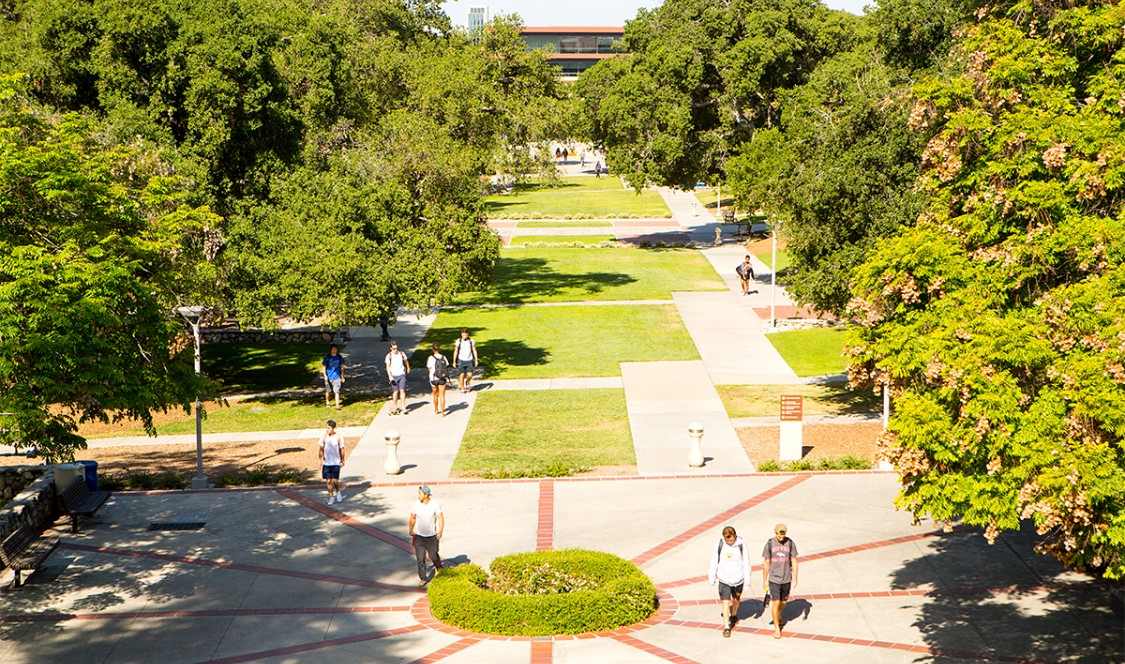Heterodox Academy (HxA) has named Claremont McKenna College as lead institution on its Top 50 Liberal Arts Colleges in the U.S. ranking, affirming the College’s longstanding commitment to the freedom of speech and expression on campus.
HxA was founded in 2015 by Jonathan Haidt, the Thomas Cooley Professor of Ethical Leadership at New York University's Stern School of Business; Lee Jussim, professor of social psychology and principal investigator of the Social Perception Lab at Rutgers University; and Chris Martin, a PhD student in sociology at Emory University, to foster viewpoint diversity in academia.
A mission is in a name, as the organization chose one that challenges orthodoxy, a trend Haidt and his colleagues saw on the rise in academia. HxA promotes heterodoxy because “bringing diverse viewpoints to bear on social, intellectual, philosophical, legal, and moral problems is likely to enhance the quality of the scholarship that bears on those issues.”
The groundwork for HxA and Haidt’s current scholarship on the values of free speech and expression in academia might be traced to his 2012 book, The Righteous Mind: Why Good People Are Divided by Politics and Religion, which deconstructs the viewpoint diversity of morality, politics, and religion in hopes of guiding readers to a place of mutual understanding.
In a recent essay, Haidt, who is slated to speak at CMC’s Marian Miner Cook Athenaeum during the program’s 2017-18 series, explained that championing viewpoint diversity on campus will lead to “a healthier civic culture that turns disagreements into opportunities for learning.” By applying this lens to a variety of American universities and liberal arts colleges, HxA’s methodology identifies which institutions value the diversity of opinion and freedom of speech.
CMC’s own Jon Shields, associate professor of government, was recruited to join HxA in 2015 in its initial membership drive due to his work in higher education. Shields was concerned that the group would remain small and isolated, but more than a thousand professors have since joined. “It’s important that knowledge is more generally disseminated,” he said, “especially to prospective students looking for a broad, liberal arts education.”
While Shields was not involved in the creation of the HxA’s ranking system, he noted that in the group’s early days, they discussed different ways of ranking colleges by their viewpoint diversity and tolerance for competing political perspectives. “Colleges are ranked on practically every dimension,” Shields said. “There are rankings for campuses with the best dinning commons and hottest guys, but not anything that pointed applicants and parents to places that respect and cultivate a broad range of political viewpoints.”
According to Jeremy Willinger, HxA’s communications director, the Heterodox Academy Guide to Colleges is a tool to inform prospective students about where they are most likely to encounter those with perspectives different than their own. And for colleges and universities that maintain a commitment to free speech and free inquiry – like Claremont McKenna – faculty and administrators can be positive influences in strengthening viewpoint diversity on campus.
“Students also have a vital role to play and can be the most important lever in determining the campus climate,” Willinger said. “Is it one of heterodoxy or orthodoxy? Do those outside of the political majority feel comfortable speaking up? Are invited speakers allowed to deliver the entirety of their remarks?”
To measure how welcoming an institution is to open dialogue and expression, the Guide collects information from public sources, including recent news coverage and controversy on free speech issues, and their FIRE (Foundation for Individual Rights in Education) and ISI (Intercollegiate Studies Institute) ratings.
Additional points are given if schools endorse the Chicago Principles, which Willinger recognized as an important set of statements that go beyond standard references to free speech and viewpoint diversity. Simply endorsing the Chicago principles is not enough though, Willinger said, it is “about creating an environment where divergent thought is an asset and where ideas can collide to refine perspectives and shatter echo chambers.”
These measurements are scored and the colleges are ranked accordingly. The culminating list represents those institutions where students are most and least likely to encounter those with different perspectives and draw from an engaging marketplace of ideas. Institutions with the highest scores are seen as most inclusive to a diversity of intellectual opinion and dissent.
The guide is less about holding schools accountable for their commitment (or lack thereof) to free speech and more focused on developing methods and actions that promote cultures of viewpoint diversity and free inquiry. “Viewpoint diversity benefits all on and off campus,” Willinger said, “from more personal empathy to stronger research.”
CMC President Hiram E. Chodosh echoed the values of the Heterodox Academy in his 2016 convocation address: “Our shared purpose is not a call for some kind of monolith, forced consensus, or dominant political position. Instead, it is a call for mutual respect for and support through respect for our disagreements, a challenge of our assumptions, a call for humility in what we think we know, the openness to be wrong, a commitment to persuade with facts and reason, and ... grace … even when we are justifiably upset.”

